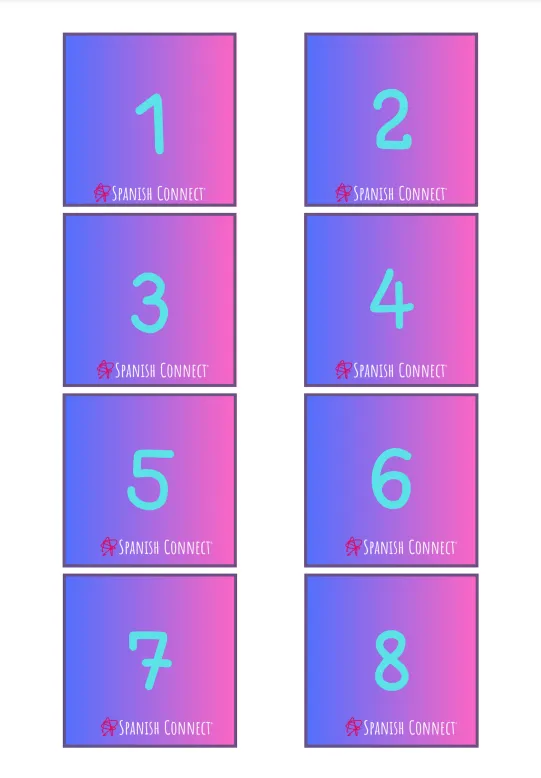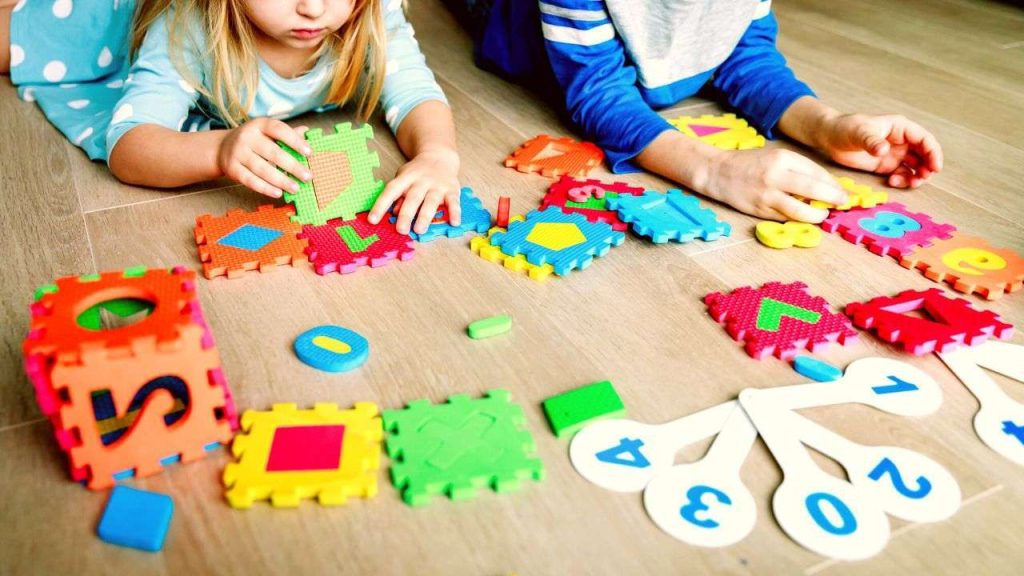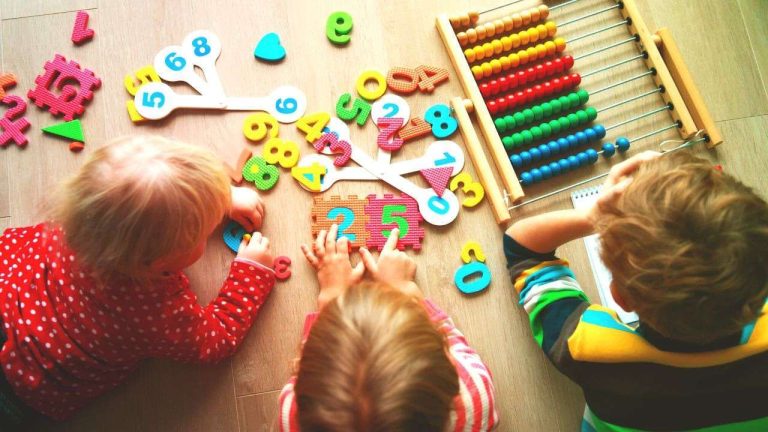Mastering numbers in Spanish is a crucial milestone in your child’s language learning journey, unlocking a world of enjoyable and educational experiences.
In this article, our objective is to help your child learn Spanish numbers from 1 to 20, laying a strong foundation for their exploration of the beautiful Spanish language.
This article is crafted for parents and carers who wish to support their kids in learning Spanish numbers in an engaging and entertaining manner.
Introducing kids to Spanish at an early age has numerous benefits, as children tend to absorb languages more effortlessly, fostering valuable bilingual skills that last a lifetime.
So, let’s get ready to explore the world of Spanish numbers together! We’ll begin our exciting adventure with the basic Spanish numbers from 1 to 10.
Table of Contents
Basic Numbers in Spanish (0-10)
As a Spanish teacher with years of experience, I can’t emphasise enough how essential it is for kids to learn the basic numbers in Spanish.
Let’s dive straight into the numbers 0-10, which are the foundation for counting in Spanish:
- 0 Cero (SEH-ro) – Zero
- 1 Uno (OO-noh) – One
- 2 Dos (dohs) – Two
- 3 Tres (t-rays) – Three
- 4 Cuatro (KWAH-troh) – Four
- 5 Cinco (SEEN-koh) – Five
- 6 Seis (says) – Six
- 7 Siete (SYEH-teh) – Seven
- 8 Ocho (OH-choh) – Eight
- 9 Nueve (NWAI-veh) – Nine
- 10 Diez (dyays) – Ten
Now that you’ve got the numbers down pat, let’s chat about some engaging activities to help your little ones practise and memorise these essential Spanish numbers.
Activities To Help Your Little Ones Practise And Memorise Spanish Numbers 0 -10
Practise by Counting Objects at Home: Firstly, counting objects is a brilliant way to cement number recognition. Use toys, fruit, or anything else handy to practise counting in Spanish. You might say, “Tres manzanas” while pointing to three apples, for example. This method is simple yet effective, as kids learn through hands-on experiences.
Use Finger Counting: Another activity I’ve found to be successful in my teaching journey is finger counting. Encourage your child to count their fingers in Spanish, starting with “uno” (one) and going up to “diez” (ten). This can be done anywhere, anytime, making it a convenient learning tool.
Use Number Games and Songs: Lastly, incorporating number games and songs into your child’s routine can make learning Spanish numbers an enjoyable experience. There’s a popular Spanish song called “Diez Deditos” (Ten Little Fingers) that helps kids associate numbers with their fingers while singing along. Trust me, your kids will love it, and so will you!
Numbers in Spanish (11-20)
Once your kids are comfortable with the basic numbers in Spanish, it’s time to move on to the next set: numbers 11-20.
These numbers follow a pattern that, once grasped, will make counting in Spanish a breeze.
Let’s take a look at the numbers 11-15:
- 11 Once (OHN-say) – Eleven
- 12 Doce (DOH-say) – Twelve
- 13 Trece (TRAY-say) – Thirteen
- 14 Catorce (kah-TOHR-say) – Fourteen
- 15 Quince (KEEN-say) – Fifteen
As you can see, numbers 11-15 have a unique structure. But from 16 onwards, you’ll notice a pattern that combines the words for ten (diez) and the single-digit numbers:
- 16 Dieciséis (DYAY-see-says) – Sixteen
- 17 Diecisiete (DYAY-see-SYEH-teh) – Seventeen
- 18 Dieciocho (DYAY-see-OH-choh) – Eighteen
- 19 Diecinueve (DYAY-see-NWAI-veh) – Nineteen
- 20 Veinte (VYAIN-teh) – Twenty
Now let’s explore some entertaining activities to help your young ones practise and memorise these numbers in Spanish.
Activities To Help Your Young Ones Practise And Memorise Spanish Numbers 11-20
Number Bingo: This is a classic game that kids absolutely love. Create a bingo card with numbers 1-20 in Spanish and have your child listen as you call out the numbers in English.
When they hear the translation, they can cross off the corresponding Spanish word on their card. This game is not only fun, but it also reinforces listening skills and number recognition.
Number Matching: Another engaging activity is number matching games. Write numbers 1-20 on one set of cards and their Spanish name (in letters) on another set. Then, ask your child to match the numbers with their Spanish name. This exercise helps to solidify the connection between the two languages and improve their understanding of Spanish numbers.
Not feeling like creating your own cards? No worries, here are some for you. Just download and print.

Group Counting: Lastly, group counting activities are a fantastic way to practise numbers 1-20. Gather a group of your child’s friends or family members and have each person say a number in Spanish, going around in a circle from 1 to 20 if possible. If you need help with a number you can listen to this. This activity encourages teamwork and makes learning numbers in Spanish a social experience.
Tips for Parents to Support Learning Numbers in Spanish
Here are a few handy tips to support your child in learning numbers in Spanish, and make the process enjoyable and effective for both of you.
Encouraging consistency and practice: Rome wasn’t built in a day, and neither is language proficiency! Encourage your child to practise Spanish numbers daily, even if it’s just for a few minutes. Consistency is key, and you’ll soon notice improvements in their skills.
Incorporating numbers into daily routines: Make learning numbers in Spanish part of your everyday life. Count stairs as you walk up them, or ask your child how many items are in the shopping trolley. By integrating Spanish into their day-to-day activities, kids will absorb the language more naturally.
Using technology and apps for learning: In today’s digital age, there are countless apps and online resources designed to help kids learn languages. Look for age-appropriate apps focusing on Spanish numbers, and encourage your child to explore these interactive tools. They’ll have fun while learning, and you might just pick up a few new words yourself!
Celebrating progress and achievements: It’s important to acknowledge your child’s milestones, no matter how small. Praise them for their efforts and progress in learning numbers in Spanish. Positive reinforcement goes a long way in boosting their confidence and motivation.
Remember, learning a new language can be a challenge for young kids, but with your support, patience, and a few creative activities up your sleeve, they’ll soon be counting in Spanish like little maestros.
Keep the learning experience light-hearted and enjoyable, and you’ll be amazed at how quickly your child picks up those Spanish numbers!
Counting by Tens up to 100 (Optional)
If your little ones have mastered numbers 1-20 and are eager for more, let’s explore counting by tens up to 100. It’s an optional yet valuable addition to their Spanish number repertoire.
Here are the multiples of ten in Spanish:
- 20 Veinte (VYAIN-teh) – Twenty
- 30 Treinta (TRAYN-tah) – Thirty
- 40 Cuarenta (kwar-EN-tah) – Forty
- 50 Cincuenta (seen-KWEN-tah) – Fifty
- 60 Sesenta (say-SEN-tah) – Sixty
- 70 Setenta (seh-TEN-tah) – Seventy
- 80 Ochenta (oh-CHEN-tah) – Eighty
- 90 Noventa (noh-VEN-tah) – Ninety
- 100 Cien (syen) – One hundred
Combining Tens and Single Numbers in Spanish (Optional)
Once your child has a good grasp of counting by tens and is familiar with single-digit numbers, it’s time to introduce them to the concept of combining these numbers to form larger numbers, like 42.
Here’s a brief explanation of how to combine tens and single numbers in Spanish.
In Spanish, when you want to express a number like 42, you start with the tens place (40), which is “cuarenta” in Spanish, followed by the word “y” (meaning “and”), and finally the single-digit number (2), which is “dos.”
So, the number 42 in Spanish would be “cuarenta y dos.”
Here are a few more examples to illustrate this concept:
- 31: Treinta y uno (30 + 1)
- 26: Veintiséis (20 + 6)
- 57: Cincuenta y siete (50 + 7)
- 89: Ochenta y nueve (80 + 9)
It’s important to note that the numbers 21 to 29 follow a slightly different pattern. Instead of using “y,” these numbers are combined into one word:
- 21: Veintiuno (Veinte + uno)
- 22: Veintidós (Veinte + dos)
- 23: Veintitrés (Veinte + tres)
- 24: Veinticuatro (Veinte + cuatro)
- 25: Veinticinco (Veinte + cinco)
- 26: Veintiséis (Veinte + seis)
- 27: Veintisiete (Veinte + siete)
- 28: Veintiocho (Veinte + ocho)
- 29: Veintinueve (Veinte + nueve)
Now let’s look at a few activities to help kids practise counting larger numbers and familiarise themselves with these larger numbers.
Activities To Help Kids Practise Larger Numbers in Spanish

Flashcards: Create a set of flashcards with the multiples of ten in Spanish (feel free to add the lower numbers too). Show your child each card and ask them to say the number out loud. You can also mix up the order of the cards to encourage flexibility in their counting skills.
Fill in the blank worksheets: Design simple worksheets with missing numbers in a sequence. For example, you could write: “20, 30, ___, 50, ___” and ask your child to fill in the missing numbers. This exercise helps them practise counting by tens while reinforcing their knowledge of the Spanish words for these numbers.
Tens and ones game: Turn this learning activity into a fun game! Write down a two-digit number in English and ask your child to translate it into Spanish using the tens and ones they’ve learned. For instance, if you write “42,” your child should say “cuarenta y dos.” This game will help them become more comfortable with the structure of larger numbers in Spanish.
By engaging your child in these activities and supporting their curiosity, you’ll pave the way for them to become more confident in their Spanish counting skills. Before you know it, they’ll be counting to 100 and beyond!
Wrap Up
Learning numbers in Spanish is a fundamental step in any child’s language learning journey. By starting with the basics (1-10), gradually progressing to numbers 11-20, and eventually tackling larger numbers, your child will develop a strong foundation in counting and numeracy in Spanish.
As a Spanish teacher, I know that the key to success lies in consistency, patience, and making the learning experience enjoyable.
Utilise the various engaging activities and games shared in this article, and remember to incorporate numbers into your child’s daily routine. With your support and encouragement, they’ll soon be confidently counting in Spanish and eager to take on new linguistic challenges.
So, whether you’re raising bilingual children or simply want to give them an edge in learning a new language, helping them master numbers in Spanish is a valuable investment in their future. And who knows, you might even pick up some Spanish along the way!
Don’t miss our informative and engaging article on the Spanish Alphabet, and How to Teach Spanish to Your Child Like a Pro, designed to help your little ones master the basics and develop their language skills. Check it out now and fuel their linguistic adventure!





